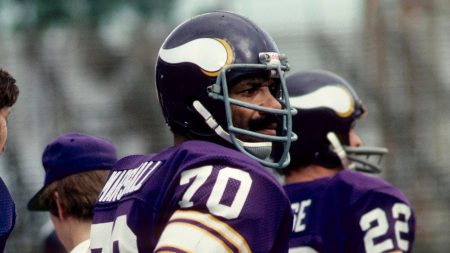The past week in college football has been marred by a series of on-field altercations and unsportsmanlike conduct, sparking a debate about sportsmanship and the image of the game. The incidents began with a post-game brawl following Michigan’s upset victory over Ohio State in Columbus. The rivalry game, already heated, escalated into a physical confrontation requiring the use of pepper spray to separate players from both teams. This incident set a negative tone for the following week, as similar scenes unfolded in other matchups. A fight erupted between Florida and Florida State, and another between North Carolina and NC State, further highlighting the growing concern over player behavior and the need for greater control over post-game celebrations.
The Big Ten Conference responded to the Michigan-Ohio State brawl by imposing a $100,000 fine on each program. This financial penalty, while significant, was deemed inadequate by some, including Alabama head coach Nick Saban. Saban, a seven-time national champion, publicly criticized the fine as insufficient, comparing it to “worrying about mouse manure when you’re up to ears in elephant s–t.” He argued that the focus should be on addressing the underlying issue of disrespectful behavior rather than simply issuing fines. Saban’s comments ignited a broader discussion about the escalating trend of unsportsmanlike conduct in college football and the need for stronger measures to curb it.
Saban’s primary concern was the act of planting a school flag at midfield after a victory, a practice he considers inherently disrespectful. He emphasized the importance of sportsmanship and protecting the image of the game, especially in the context of the evolving landscape of college athletics. With the advent of Name, Image, and Likeness (NIL) deals, college athletes are now essentially professionals, and Saban argued that they have a responsibility to uphold the reputation of the sport, just as professionals in the NFL do. He believes that actions like flag planting detract from the positive aspects of the game and create a negative perception, ultimately harming the brand and potentially impacting future opportunities for players.
Saban further emphasized the role of coaches in preventing such incidents, stating, “I’d be much more upset with my team planting a flag, because I think coaches can control that.” He placed the onus on coaching staffs to instill values of respect and sportsmanship in their players, ensuring that celebrations remain within acceptable bounds. This highlights the critical role of leadership in shaping team culture and promoting positive behavior both on and off the field. By actively addressing and discouraging disrespectful actions, coaches can contribute to a more positive and sportsmanlike environment within college football.
Adding to the string of incidents, a fourth fight broke out during the Arizona State-Arizona game, stemming from Sun Devils players attempting to plant a pitchfork at midfield. While this altercation was reportedly less intense than the previous brawls, it nevertheless underscores the pervasiveness of the issue and the need for a widespread cultural shift in college football. The recurrence of these incidents across different conferences suggests a systemic problem that requires a comprehensive approach, involving coaches, players, administrators, and conference officials, to effectively address.
The cumulative effect of these incidents has cast a shadow over the sport, raising questions about the effectiveness of current disciplinary measures and the overall direction of college football culture. The debate sparked by Saban’s comments highlights the growing divide between those who view flag planting and similar acts as harmless celebrations and those who see them as disrespectful and detrimental to the integrity of the game. Moving forward, finding a balance between passionate competition and respectful sportsmanship will be crucial for the continued growth and positive perception of college football.










